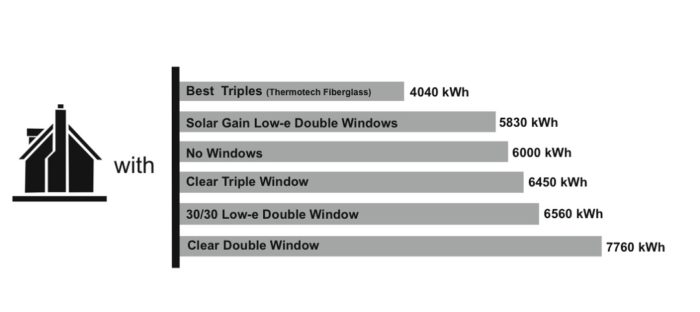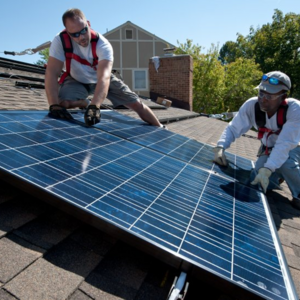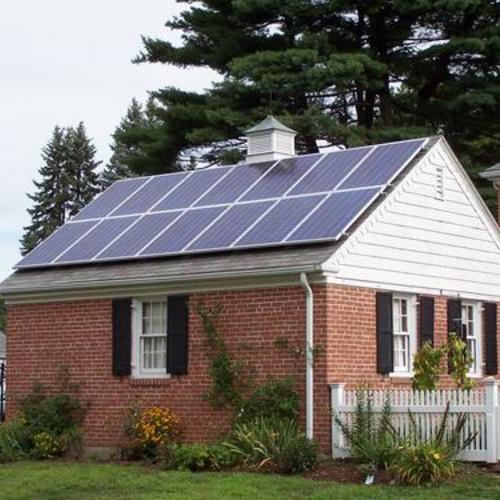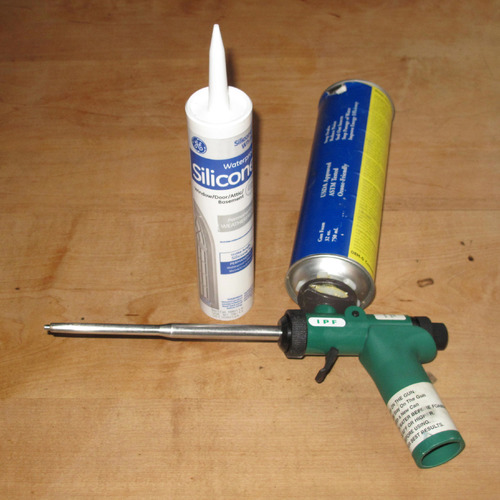
Image Credit: Stephen Thwaites, Thermotech Fiberglass Fenestration, Ltd.
Last week, I provided an overview of the 30% federal tax credits that are in place for 2009 and 2010 for residential energy upgrades. Most of the provisions of those tax credits are very good. In the rush to do a lot very quickly, though, some mistakes were made. One such mistake, in my opinion, has to do with the credit provided for window replacement.
By way of background, under the 2005 Energy Policy Act (EPAct), homeowners were able to get a 30% tax credit of up to $200 for replacing windows. The measure was intended to improve energy performance, but in fact, virtually any window qualified, so it became a give-away to people remodeling their homes and replacing windows. It also cost taxpayers a lot–more than half of the money spent on the diverse tax credits under EPAct was for window replacement.
Under the American Recovery and Reinvestment Act of 2009, the cap on the window replacement tax credit has been raised to $1,500–more than seven times the cap in EPAct. So what’s not to like about that?
The problem is that it sets a maximum “solar heat gain coefficient” for windows of 0.30. Solar heat gain coefficient (SHGC) is a measure of transmissivity–how much solar energy gets through the window. A SHGC value of 0.30 means that just 30% of the sunlight is transmitted. Such a low SHGC is a good idea in hot climates, especially on east- and west-facing windows, to prevent overheating. But it doesn’t make sense in northern climates where we want to benefit from the warmth from sunlight–as in solar tempering or passive solar heating.
To the credit of the policy makers, with the Recovery Act there was an effort to create a more rigorous standard for window performance. Along with the SHGC 0.30 limit, they established a maximum U-factor of 0.30. U-factor is a measure of the amount of heat transmitted through a window–the lower the number the less heat gets through. U-factor is the inverse of R-value, so that a U-factor 0.30 window would have an average R-value of 3.3. This is a “unit” value based on standards from the National Fenestration Rating Council (NFRC), meaning that it accounts for heat loss through the window edges and frame as opposed to just the “center-of-glass” value.
A window with a unit U-factor of 0.30 is fairly good. To get to that level of performance, it needs to have insulated glass with a low-emissivity (low-e) coating and a low-conductivity gas fill, such as argon. I would have liked to have seen it even tighter–say 0.25 or 0.20 to create demand for triple-glazed windows–but 0.30 is a lot better than what was required under EPAct.
To achieve both the 0.30 SHGC and 0.30 U-factor requirements, you have to use glass with a special low-e coating, such as the LoE3 glass made by Cardinal Glass Industries.
From what I’ve been able to learn in speaking with policy makers in Washington, this so-called “30-30 rule” came from the Joint Committee on Taxation, a quasi-independent committee of Congress that addresses the costs of legislation. They wanted to establish fairly stringent criteria to rein in the costs of the tax credit, according to Lowell Ungar, the director of policy at the Alliance to Save Energy in Washington.
As for where the specific 30-30 rule came from, one article attributes it to an aide of Maine Senator Olympia Snowe, who added it as final touches were being put on the bill at 3:00 in the morning. One has to wonder if Cardinal Glass Industries may have suggested those performance requirements. (Double glazing with Cardinal LoE3 366 and a half-inch space meets the requirement very nicely with a SHGC of 0.27 and a winter U-factor of 0.29 with air and 0.24 with argon).
Most energy experts I’ve spoken with argue that having a “one-size-fits-all” requirement for windows is a mistake. Such windows are not effective for passive solar gain. It doesn’t make sense in northern climates, where solar gain can help in reducing heating costs. And it doesn’t even make sense in more southern climates if one accepts the wisdom of specifying different glazings on different orientations–high-SHGC windows on the south and low-SHGC windows on the east and west.
One energy expert who likes the 30-30 rule is Arlene Stewart, president of AZS Consulting, a columnist for Door and Window Manufacturer and a board member of the Florida Home Builders Association. “From an implementation standpoint, it makes a lot of sense,” she told me by e-mail. She thinks the standard will lower the cost of efficient windows because distributors won’t have to keep a large number of options in stock. Regarding passive solar energy, Stewart dismisses the importance of passive solar. “I think that with the advent of forced-air systems, there is less of a need for passive solar,” she said. “I don’t think as many people occupy their homes at a time when passive solar is of most use. Unless we can figure out a way to capture that energy for use at a later time, I think the benefits are wasted since people are out of their homes Monday through Friday during daylight hours.”
Stephen Thwaites of Thermotech Fiberglass Festration in Ottawa argues that in a northern climate even if the same glazing is used on every side of the house, a higher-SHGC glazing will significantly reduce energy consumption. Thwaites and an associate carried out energy modeling for me to make that case, as shown in the accompanying chart. In the Boston climate, based on HOT-2000 modeling runs of the highly insulated Minto Inspiration House in Manotick, Ontario, using 30-30 windows throughout the house results in a combined heating and cooling load of 6,560 kWh. When the house is modeled with higher-SHGC (0.48) and somewhat lower R-value windows (U-factor 0.34), the annual energy use for heating and cooling drops to 5,830 kWh (11% lower). Several other options are shown in the graph, including the best triple-glazed option from Thermotech.
“With very few exceptions,” according to Thwaites, “a low-e window with a SHGC of 0.30 or lower is a bad window for houses in heating climates.”
So what should we do? The answer is actually fairly simple: Use the 30% window replacement tax credit only for non-south-facing windows. For south-facing windows, skip the credit and install windows that transmit a lot more sunlight (SHGC of at least 0.45). In fact, maybe we can use the requirements of this new tax credit to finally get some traction for the idea of “tuning” windows by orientation (using different glazings for different orientations).
I invite you to share your comments on this blog. What do you think about the 30-30 rule for window replacement tax credits?
To keep up with my latest articles and musings, you can sign up for my Twitter feeds
Weekly Newsletter
Get building science and energy efficiency advice, plus special offers, in your inbox.















9 Comments
Window SHGC
You are right Alex, a lot was left on the table for increased efficiency from south facing glass. The .30 SHGC is pitiful for a 2 pane window, the large window manufacturers rule. Hopefully builders interested in higher net solar gain will support the window makers who offer the right glass.
Window Tints
Many homeowners are trying to go green with their home improvements. Once they have done the fast and simple upgrades and the improvements that can make a big difference without breaking the bank, they are ready to start thinking about extreme green home improvements. For 15%-25% of the cost of window replacement, anyone can reduce solar heat gain on existing dual pane windows (which are already good for winter). Of course, if you have single pane windows you need to replace those. Most window films are for reducing solar heat gain in the summer, low-e films both block summer heat and improve winter heat retention.
I think it' s a good start.
I think it' s a good start. In Arizona, its great for all the older homes that have outdated windows. The newer homes are already using energy efficient windows. Window replacement tax credits are going to help the industry in a down time, and will save money as energy prices go up. Not just this year, but for decades to come. That's really not a bad investment, but it could be improved.
More information on Tax Credits.
You make a great point about the Low-E coating needed for more energy efficient windows in colder climates. Check out CalFinder for a bit more information. Oh and Dough that's a great point...I think home builders go to the makers that do indeed supply the right glass for something like a south facing window.
passive solar windows
I have the NFRC windows - I chose AccurateDrowin in Winnipeg after searching and searching.
However, since our goal is to achieve a passive solar environment, I chose to have the southern facing windows running across from east to west - the ones with the most solar exposure - be clear, not Low-E and SHGC of .48.
Since the southern view was of primary importance, we chose to not have the lower visible transmittance (VT) which comes with a Low-E.
We will be getting a certificate from the company that will help us apply for federal credits.
Accurate Dorwin are more expensive than Marvin, by about 50%. But they are pultruded fiberglass with insulated frames. I know they'll be wonderful!
disagree with much of the idea of of higher shgc
Think about it, you can not cost effectively maintane low u-values while at the same time raise shgc values. Int he Northwest during heating months, day light hours are few and unless you design into your home lots of rock and block systems to store that short heat gain, I find it hard to believe any offset you may gain will be far outstipped during the rest of the darker side of the 24hr clock. Remember to raise shgc you also raise u-value. I don't know about where you live, but in Spokane Washington there are not many homes situated and archectecturally set to maximize solar heat gain through there windows. the test used above probably reflests one that took this intomconsideration in it;s design and orientation to the sun to specifically increase shgc benefit. So I guess what I'm suggeting, is in order to maximize enrgy savings we should build archetectural codes requiring SLGC desighns to incorperated in all new homes, (OR minimize the amount of glazing allowed) and keep incentifying existing homes to upgrade old windows with even lower u-values and SHGC 's
By the way you might consider spec's that rate windows for reasonable life use expectations as well... With a wall mart mentallity at large with the consumers & corresponding low bid chasing window mnfr co's, were gonna be replacing a large percentage ot the windows now being used to replace older windows. there making them cheaper and cheaper. Great Glass w/ Lousy frames. In less than 10 years over 30% of the replacement windows tax payers are paying to replace will need to be replaced again. This is good for me "I'm in window sales", but in the long run is it good for us!!!
Reply to "R You Kidding"
R You Kidding,
It's an oversimplification to say that "to raise SHGC you also raise U-value." There is such a thing as a high-SHGC low-U window. In general, the hard-coat low-e coatings provide a higher SHGC than the soft-coat low-e coatings -- while still providing lower U-factors.
And while you may well "diagree" with the idea of using high-SHGC windows in northern climates, it's not really a question of agreeing or disagreeing. Heat gain and heat loss is a matter of physics, not opinion. These heat gains and heat losses can be measured and modeled. Anyone who lives in a cold climate and chooses low-SHGC glazing over high-SHGC glazing is throwing money out the window -- because their heating costs will be higher than necessary.
You might want to read more:
"High-Solar-Gain Glazing"
"Choosing Triple-Glazed Windows"
exposure
Martin,
What about a house with a massive amount of glass facing West, for example, due to owner's requirement for view? In this case a low SHGC is helpful, as overheating is a factor = expense for cooling in the summer.
Response to Richard Miller
Richard,
You're right -- and that's what a good energy modeling program will reveal.
In many cases, the ideal glazing choice differs for each orientation. The best glazing choice for the west orientation is often different from the best glazing choice for the south orientation, so the house ends up with orientation-specific glazing.
The process is best performed with an energy modeling program like PHPP.
Log in or create an account to post a comment.
Sign up Log in